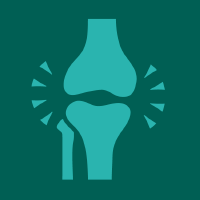Topic Menu
► Topic MenuTopic Editors

2. Department of Neuroscience, Psychology, Drug Research and Child Health (NEUROFARBA), University of Florence, 50121 Florence, Italy

Advanced Functional Materials for Regenerative Medicine
Topic Information
Dear Colleagues,
The emergence of advanced functional material and their integration in devices boost the development of tissue regeneration for the replacement of organs to restore damaged tissues. The properties and nano-dimensions of functional materials play a crucial role in fabricating innovative architectures for tissue regeneration. We expect to receive papers related to the new topic and how such nanomaterial can be assembled in scaffolds, bio-composites, and 3D-printed architectures to enhance the efficiency of tissue degeneration clinical, animal or laboratory studies reporting cell proliferation/differentiation, and regeneration. We look forward to receiving original articles or reviews focusing on, but not limited to, bio-based materials, bio-implantable devices, 3Dprinting processes, and biomechanics.
Prof. Dr. Antonino Morabito
Prof. Dr. Luca Valentini
Topic Editors
Keywords
- biocomposites
- biodegradable devices
- biomimetic scaffolds
- nanostructured materials
- biomechanic
- 3D printing
Participating Journals
| Journal Name | Impact Factor | CiteScore | Launched Year | First Decision (median) | APC | |
|---|---|---|---|---|---|---|

Biomedicines
|
4.7 | 3.7 | 2013 | 15.4 Days | CHF 2600 | Submit |

Cancers
|
5.2 | 7.4 | 2009 | 17.9 Days | CHF 2900 | Submit |

Journal of Functional Biomaterials
|
4.8 | 5.0 | 2010 | 13.3 Days | CHF 2700 | Submit |

Nanomaterials
|
5.3 | 7.4 | 2010 | 13.6 Days | CHF 2900 | Submit |

Polymers
|
5.0 | 6.6 | 2009 | 13.7 Days | CHF 2700 | Submit |

MDPI Topics is cooperating with Preprints.org and has built a direct connection between MDPI journals and Preprints.org. Authors are encouraged to enjoy the benefits by posting a preprint at Preprints.org prior to publication:
- Immediately share your ideas ahead of publication and establish your research priority;
- Protect your idea from being stolen with this time-stamped preprint article;
- Enhance the exposure and impact of your research;
- Receive feedback from your peers in advance;
- Have it indexed in Web of Science (Preprint Citation Index), Google Scholar, Crossref, SHARE, PrePubMed, Scilit and Europe PMC.

